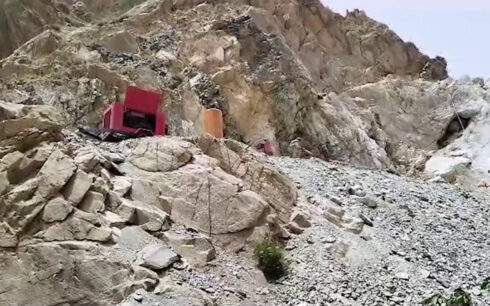Afghanistan’s economic outlook remains precarious, with the country facing significant challenges such as policy uncertainty, international isolation, and a narrow revenue base, according to a World Bank report released on Wednesday.
The report outlined a range of structural issues hindering Afghanistan’s recovery, including a high trade deficit, heavy reliance on imports, and shrinking fiscal resources. Key sectors like agriculture remain vulnerable to climate change, insecurity, and underinvestment, complicating efforts toward economic stability.
“The lack of international recognition and ongoing diplomatic isolation severely restrict access to foreign aid, investment, and financial markets,” the report stated. “This isolation not only limits Afghanistan’s ability to engage with global trade but also impedes the Taliban administration’s ability to secure the financing needed for long-term development and critical human capital improvements.”
Without broader international engagement and meaningful economic reforms, the report warned, Afghanistan risks prolonged stagnation, with growth primarily driven by consumption and limited industrial activity.
Trade Deficit Worsens
Afghanistan’s trade balance continues to pose severe challenges. While exports remained stable in 2023-24, a surge in imports widened the trade deficit, the World Bank reported.
“This was fueled by a strong afghani, which made imports more affordable, and a revival in domestic industrial activity that increased demand for imported goods,” the report noted.
The afghani appreciated sharply in early 2023, buoyed by strong but undisclosed foreign exchange inflows. However, the currency began to stabilize in 2024, with slight depreciation raising concerns about the sustainability of these inflows and the long-term stability of the exchange rate.
Amid weak economic recovery and persistent deflation, Afghanistan’s monetary environment remains volatile. The money supply grew modestly—0.6 percent in 2023-24, down from 2.1 percent growth in 2022-23, following a steep contraction of 4.4 percent in 2021-22.
The report highlighted liquidity concerns and the central bank’s limited capacity to manage the economy under international sanctions as critical risks. Despite reports of improved profits in some banks, overall profitability remains below pre-2021 levels.
Modest GDP Growth
Afghanistan’s gross domestic product (GDP) has shown signs of recovery after two years of sharp declines, driven largely by private consumption. However, the gains have been modest, with only 10 percent of the losses from the past two years recovered, leaving the economy far behind regional averages.
At the current pace, it could take more than a decade for Afghanistan’s economy to return to pre-2021 levels, the report said.
Following two years of severe economic contraction—20.7 percent in 2021-22 and 6.2 percent in 2022-23—the economy grew by 2.7 percent in 2023-24. Growth was recorded across the agriculture, industrial, and services sectors.
Agriculture, which accounts for 36 percent of GDP, expanded by 2.1 percent in 2023-24 after contracting by 6.6 percent the previous year. This recovery was attributed to favorable weather conditions for cereal production, including above-average precipitation and increased crop diversification in the wake of the Taliban’s ban on opium cultivation.
While the Taliban has auctioned several small mining contracts to generate revenue, the report noted that many of these projects have yet to begin operations.





